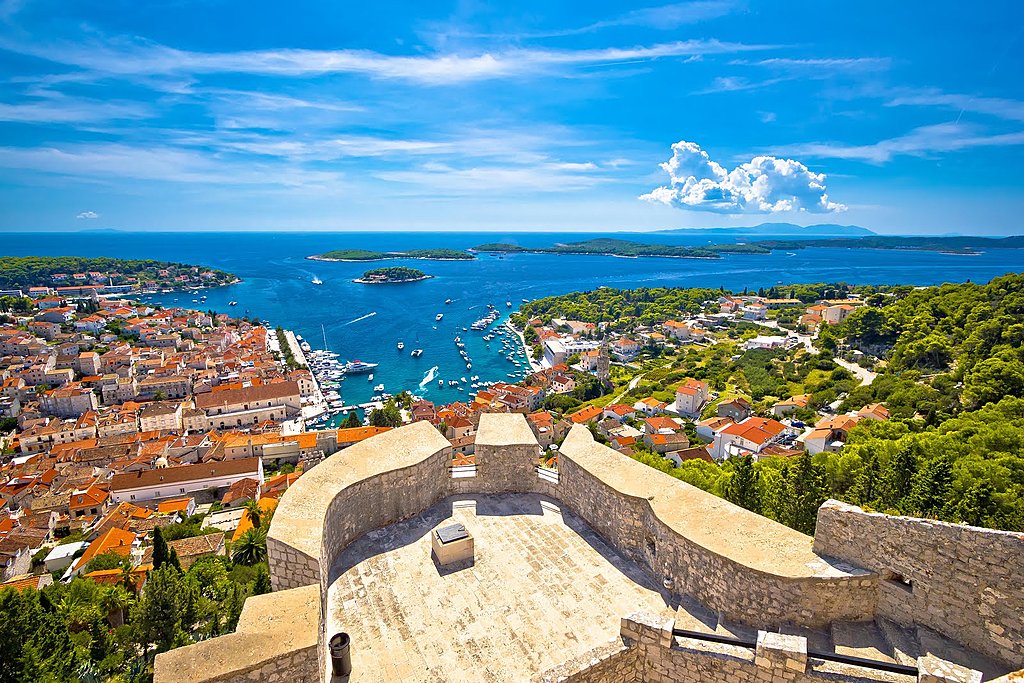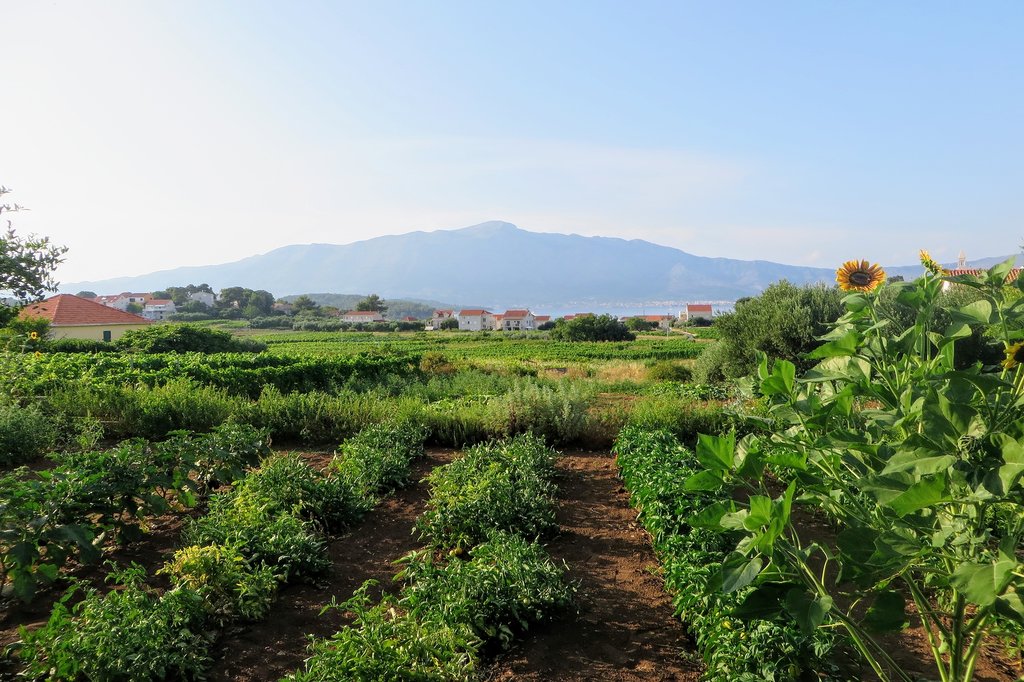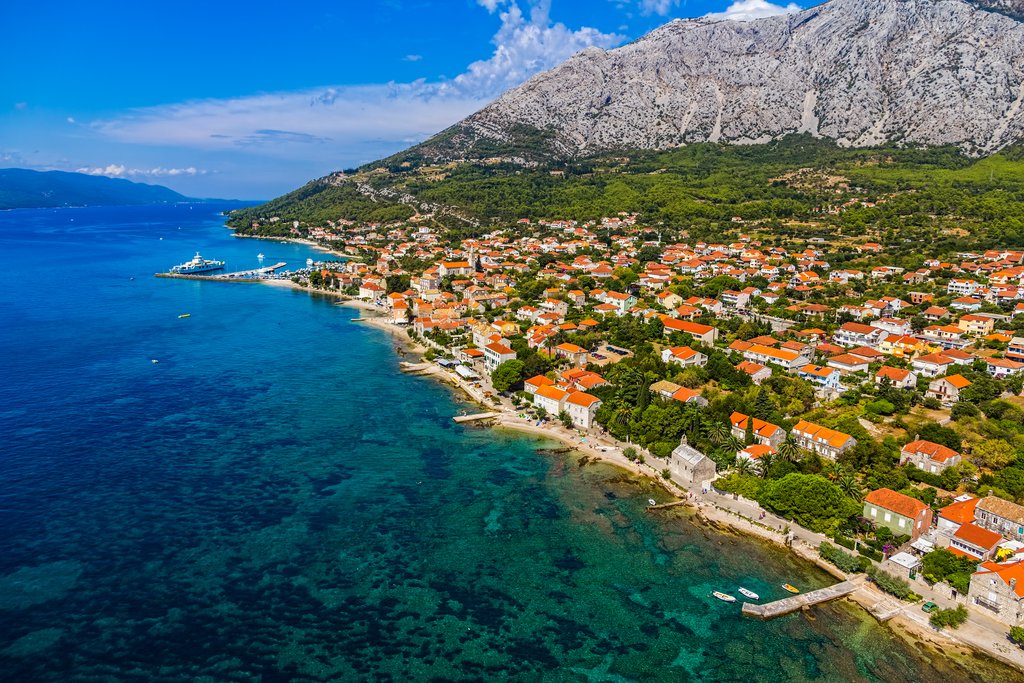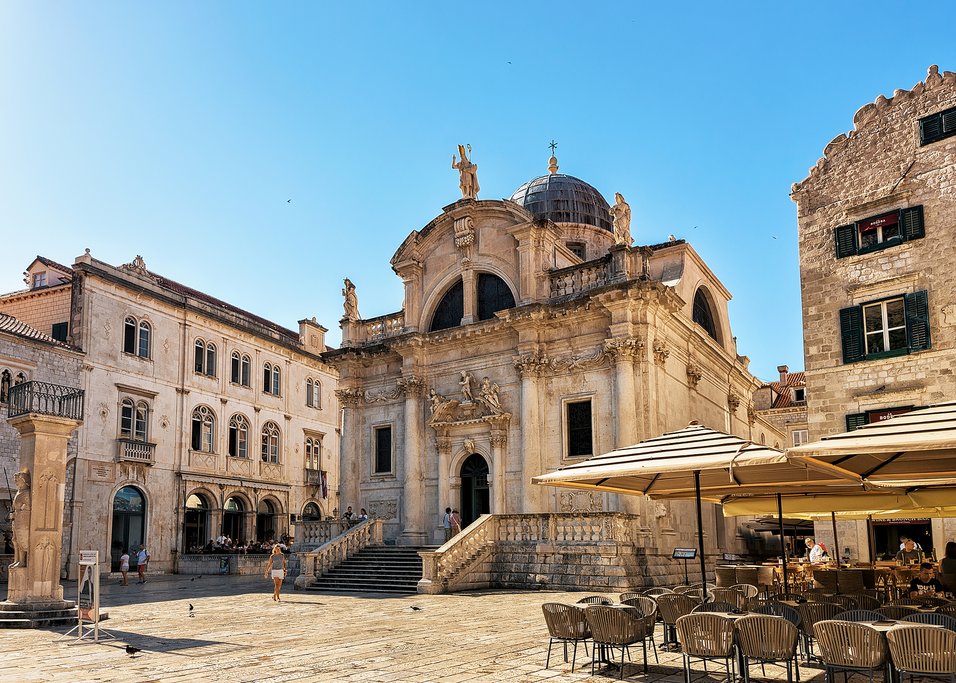Highlights
- Walk through beech and pine woods to marvel at Plitvice Lakes enchanting beauty
- Hike, climb, swim, and jump your way down the Cetina River
- Kayak the Adriatic Sea for a day of sun, swimming, & snorkeling
- Cycle through Lumbarda wine country and taste native Grk wine
- Dine on fresh oysters and mussels after a day of hiking the Pelješac Peninsula
Brief Itinerary
| Day | Highlights | Overnight |
|---|---|---|
| Day 1 | Welcome to Zagreb! | Zagreb |
| Day 2 | Zagreb to Plitvice Lakes National Park | Plitvice Lakes National Park |
| Day 3 | Sunrise at Plitvice Lakes, Drive to Split | Split |
| Day 4 | Rafting, Zip-lining, & Canyoning on the Cetina River | Split |
| Day 5 | Ferry from Split to Hvar | Hvar Town |
| Day 6 | Sea Kayaking around Pakleni Islands | Hvar Town |
| Day 7 | Ferry from Hvar to Korčula | Korčula Town |
| Day 8 | Cycling & Wine Tasting Tour in Lumbarda | Korčula Town |
| Day 9 | Hike through Pelješac Peninsula | Dubrovnik |
| Day 10 | Walking Tour of Dubrovnik | Dubrovnik |
| Day 11 | Depart Dubrovnik |
Detailed Itinerary
Day 1: Welcome to Zagreb!

Start your adventure from Zagreb, the capital of Croatia. Upon arrival at the airport, you'll be transferred to your hotel to settle in. The rest of the day is yours to spend as you like. The city center is easily walkable and the streets and parks are easy to navigate by foot. All the main attractions and restaurants are within walking distance.
A gem of a European city, Zagreb is at once historic and new. It's filled with leafy green parks and gothic/neo-renaissance buildings, yet there's also modern shopping complexes, outdoor malls, and endless dining and drinking options. Consider heading out on a guided walking tour of the historic heart of the city. This involves walking from the main square to Zagreb's Upper Town and passing through local markets before reaching St. Mark's Square.
Alternatively, you can visit one of the many museums and art galleries, like the Homeland War Museum, the Nikola Tesla Technical Museum, or the ever-popular Museum of Broken Hearts. Or stroll through the city center, enjoying 17th-century neo-baroque architecture found at Zagreb's Art Pavilion and Croatian National Theater.
Zagreb also has a number of beautiful city parks which are great for exploring and people watching, especially in the late afternoon. Maksimir is a great option, with a variety of cafés nearby to pick up a coffee for your stroll.
Day 2: Zagreb to Plitvice Lakes National Park

Today, you'll make the drive south to Plitvice Lakes National Park, one of Croatia's most popular national parks. Along the way, make a point to stop at Rastoke. Rastoke is a small village known for its old watermills and beautiful waterfalls as two rivers converge in the area. This is a nice precursor of the sights to come at Plitvice Lakes.
A short drive later, you'll arrive at Plitvice Lakes National Park in the early afternoon and can explore the park at your leisure. A must-visit for any traveler to Croatia, the UNESCO-protected park is comprised of an exquisite collection of 16 glassy emerald green and blue travertine lakes, more than 90 cascading waterfalls that seemingly cover every corner of the park, and numerous caves. The terraced lakes are surrounded by beech and pine forests and are home to extensive wildlife.
Choose one of eight different hiking trails, ranging from three to eight hours in duration, where the upper lakes tend to be less crowded during the peak season. You may wish to bring a bought lunch (and a bottle of wine!) with you to enjoy a picnic. Tickets are purchased at the entrance of the Park.
Driving time (Zagreb to Rastoke): 1.5-2 hours
Driving time (Rastoke to Plitvice): 30 minutes
Day 3: Sunrise at Plitvice Lakes, Drive to Split

Early morning is one of the best times to visit Plitvice Lakes before the mid-day crowds arrive. You can explore the park on your own or opt for a local guide who will take you on a number of defined routes of varying lengths throughout the park. After enjoying a leisurely morning in Plitvice, carry on your way south to Split. Upon arriving in Split, check into your hotel and settle in before taking the rest of the afternoon to wander Split's historic center.
Start at Pjaca Square for pretty views of white marble tiles, the Iron Gate (the western entrance to Diocletian's Palace), a Romanesque clock tower with the remains of a medieval sundial, and the 15th-century Town Hall. Stop for lunch at Trattoria Bajamont, just north of the Iron Gate. From there, visit the popular Voćni trg or Fruit Square. Here you can enjoy renaissance architecture, influenced during Split's Venetian era. For a bit of shopping and a bite to eat head to Marmont Street, though you'll want to head to the waterfront to catch the sunset.
In the evening, take a stroll along Split's seafront Riva to admire the waterfront views before finding the off-beat Konoba Dioklecijan restaurant, just to the left of the Bronze Gate for a bite to eat, its outdoor terrace built into the walls of Diocletian's Palace.
Driving time (Plitvice to Split): 2-3 hours
Day 4: Rafting, Zip-lining, & Canyoning on the Cetina River

You'll get an early start this morning to drive south along the coast to Zadvarje for a day of rafting and canyoning the Cetina River, ending with the option to zip-line in Omiš.
You'll begin with rafting in a protected area of the river canyon popular with tourists every summer. The quiet parts of the river, as well as the second and third-grade rapids, create the perfect combination of relaxation with high-adrenaline adventure over the course of three hours. Next, you'll meet your guide and change into your gear (wetsuit, life vest, and helmet) to hike, climb, slide, swim, and cliff jump (optional) your way down the river until you reach Omiš. Celebrate the fun with a break for lunch, before taking the early afternoon to zip-line over the Cetina.
After lunch, you'll experience a true adrenaline rush. You'll have the chance to zip your way across the magnificent Cetina River Canyon suspended by a harness and wire. There are eight wires in total running a length of 6,890 feet (2,100 m), the highest wire reaching 492 feet (150 m) above the river canyon. Enjoy incredible bird’s eye views of the surrounding scenery on this three-hour excursion.
After the tour is complete, you'll transfer back to Split.
Driving time (Split to Zadvarje): 1 hour
Driving time (Omiš to Split): 45 minutes
Chat with a local specialist who can help organize your trip.
Day 5: Ferry from Split to Hvar

This morning, catch the ferry to the island of Hvar and check into your hotel. A Croatian island in the Adriatic Sea, Hvar is a popular destination with tourists due to its natural setting, mild climate, and its historic port town of the same name. Highlights of Hvar Town include its 13th-century walls, a hilltop fortress, and the main square anchored by the Renaissance-era Cathedral.
For some of the best views of the island, Hvar Town, and the nearby Pakleni Islands take a short walk up to the 16th-century Španjola Fortress. Or, join a kayaking tour and head out on the Adriatic to discover the many secluded coves that outline the islands. To cover some ground and appreciate the variation in island landscape: from lavender plantations and olive groves to vineyards and pine woods, you may like to join a (wine tasting) cycling or hiking tour. The less active might opt to rent a scooter for faster coverage of the local scenery.
After the day's adventures, treat yourself to a drink in the ancient piazza of Hvar overlooking the Venetian loggia, 7th-century fortification walls, and the oldest municipal theater in Europe.
Ferry time: 1.5-2 hours
Day 6: Sea Kayaking around Pakleni Islands

In the morning, head out on a sea kayaking adventure to the Pakleni Islands, just off the coast of Hvar and explore their many hidden beaches and lagoons. The islands are the most beautiful part of the Hvar Riviera and are a favorite retreat for locals seeking to escape the summer heat. Altogether, there are 14 wooded and rocky islets.
You'll meet your guide at Krizna Luka beach, just a short walk from Hvar's city center, to choose your kayak (single or double) and grab your gear. Here you will listen to a short safety talk and be introduced to the sea kayaking basics. From Krizna Luka, you'll paddle southeast along the coast to a secluded beach before continuing on through the channel to the south side of the Islands. You will get to experience the open sea and unending views of the horizon, as well as admire views of Hvar Town from this vantage point.
If there are southerly winds, the alternative is to stick to the north side of the islands to be protected from the winds. This route takes you through narrow straits and around the islands to reveal small, pebbled beaches—beaches you will have all to yourself for swimming, snorkeling, and relaxing.
Day 7: Ferry from Hvar to Korčula

Collect your things and catch a ferry to Korčula. Once on Korčula, the afternoon and evening are yours to discover this little island's numerous restaurants, taverns, shops, and bars as you roam the maze of gray stone houses, alleys, churches, and squares.
Enjoy a traditional lunch of lamb and goat in Korčula's Old Town, one of the finest examples of Venetian architecture on the Dalmatian coast. Next, visit the 14th-century Land Gate on top of an elegant staircase, before heading to the St. Mark's Cathedral to admire its strange sculptures of beasts and people. Art enthusiasts will appreciate a visit to the Bishop's Treasury next door for a small but impressive art collection, including works from Carpaccio, Bassano, and Tiepolo. From there, you may wish to visit the unremarkable house thought to be the birthplace of Marco Polo.
If beaches are what you're after, rent a bike or ride the bus the 5 miles (8 km) to the sandy beaches of Lumbarda. Afterward, grab a bite to eat and pair it with the local dry white, Grk, indigenous to Lumbarda and nowhere else.
Ferry time (Hvar to Korčula): 1.5 hours
Day 8: Cycling & Wine Tasting Tour in Lumbarda

Spend the day on a cycling tour (private or with a group) across the island from Korčula Town to Lumbarda with stops along the way to visit beaches and wineries. Pick up your bike and meet your guide in Korčula and ride out of the town south toward Lumbarda. You will cycle through fields, villages, and wineries, covering asphalt, gravel, and dirt roads with vistas opening up to the Adriatic Sea as well as to the impressive Mt. Ilija on the nearby Pelješac Peninsula.
This gentle route explores the ancient and historical sites of the eastern side of the island as you work your way to the spread-out village of Lumbarda. Boasting beautiful beaches and centuries-old winemaking traditions, Lumbarda is home to Grk, a white grape variety that will pair well with your lunch or dinner. Some of Croatia's best white wines are produced on Korčula and you won't be left wanting.
You'll also have the opportunity to visit Bire Winery, a family-run winery that produces Grk wine as well as its own varietals, including a rosé. All the wineries in the area produce Grk which is unique to this region due to its sandy soil and Plavac Mali (a red grape grown extensively across South Dalmatia that acts as a pollinator for the Grk vines).
Take some time to relax on one of Lumbarda's beaches before returning to Korčula Town for the evening.
Cycling time: 3-5 hours
Day 9: Hike through Pelješac Peninsula

Start the morning early with a short boat ride to the 15th-century maritime town of Orebić on the Pelješac Peninsula. From Orebić, you'll pass by charming stone villas, once occupied by famous sea captains, as you start your hike out of the town. You'll trek along the southern slopes of Mt. Ilija, passing remote vineyards and an old Franciscan monastery.
Along the way, stop to enjoy great vistas of nearby Korčula and the Pelješac archipelago before continuing your hike to the coast and along the waterfront to explore the laid-back Dalmatian villages, Kučište and Viganj.
Later this afternoon, you will make your way to Dubrovnik on the mainland. En route, you will stop in Ston to explore one of the longest defensive stone walls in Europe (originally built to keep predators away from the town's saltpans) and discover the importance this area held in the 14th century. Discover beautiful views over Ston and its glittering saltpans from a parapet walkway on Ston's wall. Reward your efforts with a light meal of fresh oysters or mussels before transferring overland to Dubrovnik.
Often referred to as the "Pearl of the Adriatic", Dubrovnik is a world-renowned city of exceptional charm. The remainder of the day will be at your leisure, allowing time for you to wander and explore this magical city. Climb the 16th-century city walls for incredible views of countless red rooftops of old stone houses, towers, turrets, churches, and palaces. And be sure to find your way to the limestone-paved Stradun, Dubrovnik's main street to get your bearings and choose from some of Croatia's best restaurants and wine bars.
Hiking distance: 2.5-6 miles (4-9.7 km) depending on route
Hiking time: 2 hours (optional Ston wall walk: 1 hour)
Day 10: Walking Tour of Dubrovnik

Start your day early (around 8 am) to avoid the crowds and to embark on a tour of Dubrovnik where you'll meet your expert guide outside the entrance to the medieval city at the 16th-century Pile Gate. Entering Old Town, you'll uncover centuries of the city's rich history as you listen to stories of local life and legends and of the importance Dubrovnik once held in the era of the Republic. Highlights include Onofrio's Fountain, the 15th century Rector's Palace, Luza Square, the Church of St. Blaise (St. Vlaho), and the café-lined streets of Brsalje Street.
After touring the streets and alleys, you'll head for Lovrijenac Fortress as well as the city's impressive defensive walls, the second-largest set of city walls in the world. At certain places the wall rises 75 feet high, offering excellent vantage points for photos of the coastline.
For the rest of the afternoon, explore Dubrovnik and its surroundings on your own or enjoy the afternoon sun on the nearby beaches. Come early evening, you can get stunning panoramic views over the city and Adriatic by taking the cable car up to Srđ Mountain before descending back down for dinner at one of Dubrovnik's great restaurants.
Day 11: Depart Dubrovnik

Depending on when you depart, you may have time to visit one of Dubrovnik's museums, like the Franciscan Monastery and Museum. This large complex houses many treasures, including the world's third oldest pharmacy dating from 1317.
Alternatively, for a collection of 15,000 pieces of interesting works, visit the Rector's Palace and Cultural Historical Museum. Wander this well-preserved palace-turned-museum and explore its exhibits, some detailing life in the Republic of Ragusa during medieval times.
The drive to the airport from Dubrovnik takes around 45 minutes with normal traffic.
